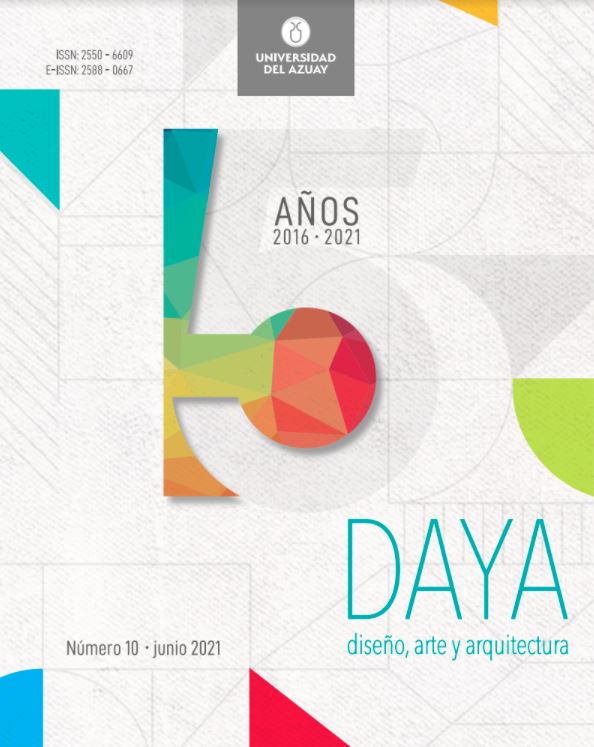LA “TIERRA”: UN MATERIAL COMPUESTO
DOI:
https://doi.org/10.33324/daya.v1i10.383Parole chiave:
Construcción con tierra, tierraAbstract
La problemática ambiental ha impulsado la investigación de materiales alternativos que ayuden a aminorar el impacto derivado de la construcción. En este contexto, la “tierra” y los materiales a base de arcilla sin cocer se han presentado como una alternativa interesante a materiales convencionales que incorporan gran cantidad de energía. Pese a que existe una creencia generalizada de que la “tierra” y los materiales a base de arcilla cruda están bien entendidos, mediante el estudio del estado del arte en lo referente a los antecedentes históricos, los limitantes, la innovación del material, sus características y composición, se expone la complejidad que conlleva su estudio y correcta aplicación. Se puede decir que “tierra” es un nombre genérico que se da al material compuesto por diferentes tipos de silicatos. Estos minerales tienen características y propiedades específicas de acuerdo a su estructura y composición química molecular. Entre los silicatos, las arcillas contienen nanopartículas responsables de conglomerar el resto de constituyentes gracias a sus características y, por tanto, son consideradas componentes fundamentales para la exploración e innovación del material. En la actualidad la combinación de modernas técnicas de análisis permite una mayor comprensión de la composición y estructura de la “tierra” y la arcilla. Estos avances han provocado el desarrollo de tecnologías que permiten optimizar los materiales de arcilla tomando en cuenta las características microscópicas mediante procesos microbiológicos; nanotecnología, geopolimerización, activación alcalina, etc.
Palabras clave: Construcción con tierra, tierra, arcilla, innovación, composición.
Abstract
The environmental problem has prompted research into alternative materials that help reduce the impact from construction. In this context, soil and raw clay-based materials have emerged as an interesting alternative to conventional materials that incorporate a large amount of energy. Although there is a widespread belief that soil and raw clay-based materials are well understood, through the study of the state of the art in relation to the historical background, the limitations, the innovation of the material, its characteristics and
composition, the complexity involved in its study and correct application is exposed. It can be said that soil is a generic name given to the material composed of different types of silicates. These minerals have specific characteristics and properties according to their structure and molecular chemical composition. Among the silicates, clays contain nanoparticles responsible for conglomerating the rest of the constituents thanks to their characteristics and, therefore, they are considered fundamental components for the exploration and
innovation of the material. Nowadays, the combination of modern analysis techniques allows a better understanding of the composition and structure of soil and clay. These advances have led to the development of technologies that allow the optimization of clay materials taking into account the microscopic characteristics through microbiological processes; nanotechnology, geopolymerization, alkaline activation, etc.
Keywords: Construction with soil, soil, clay, innovation, composition.



